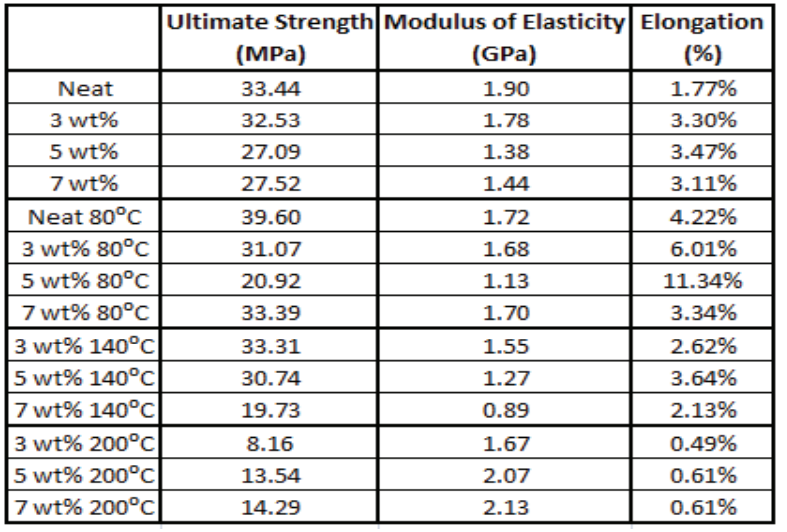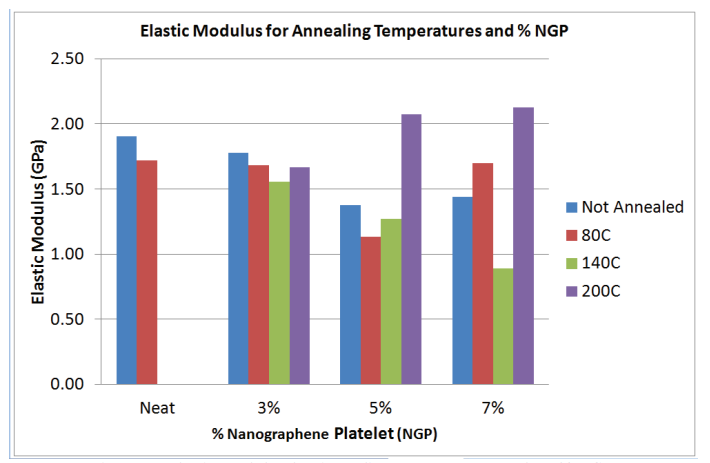Researchers from the Ingram School of Engineering at Texas State University-San Marcos recently published their findings on polyamide 6 nanographene composites. Outlined in ‘Electrical and Mechanical Properties of Fused Filament Fabrication of Polyamide 6 / Nanographene Filaments at Different Annealing Temperatures,’ we find out more about electrostatic charge dissipation in relation to temperature changes with the use of specific materials.
 Nanographene particles can reduce electrical resistivity as well as generate conductive networks. These composites also promise the benefits of parent polyamide 6, offering good mechanical properties for FDM 3D printing—in this case, using a Lulzbot TAZ 6 3D printer.
Nanographene particles can reduce electrical resistivity as well as generate conductive networks. These composites also promise the benefits of parent polyamide 6, offering good mechanical properties for FDM 3D printing—in this case, using a Lulzbot TAZ 6 3D printer.
The research team turned to conductive plastics because—unlike nonconductive plastics—they can act as a shield from electromagnetic interference (EMI).
“Conductive plastics are dependent on the material thickness, dispersion of the additive, and the conductivity of the additive. An advantage of using a conductive plastic instead of a coating is that the EMI shielding is integral to the part and cannot be removed by abrasion,” explained the researchers.
Nonconductive polymers also do not offer what is often necessary protection from electrostatic discharge (ESD); for example, industries that produce semiconductors or medical devices must ensure the protection of sensitive electronics. Conductive polymers can also be used to make packaging for such devices, capable of diminishing electrical charges. Both Polylactic Acid (PLA) polymer and reduced graphene oxide (r-GO) are suitable for making electrical components like circuit boards due to their conductivity—allowing them to improve on other materials like copper wire.
A variety of nanomaterials are also used for making nanocomposites capable of dissipating electrostatic charge, like 4 wt% PA12/carbon black nanocomposites. These materials may also be made with polyamides that are durable enough for space, combined with other additives. Graphene nanoplatelets are another alternative, composed of flat carbon nanosheets—offering good quality and better affordability.
3D printing during this study was not seamless. Despite the disadvantages of using SLS, the research team encountered issues with print quality, prompting a change from PA11 to PA6 due to availability. The interlaminar separation was still present, resulting in both air pockets and further electrical resistivity. Due to the findings in this study, the researchers suggested the use of an IR light ‘mounted ahead of the extruder.’ Localized heat could prove to be more effective in adhesion of layers.
Ultimately, the researchers performed tensile tests on the neat PA6, and with 3 wt%, 5wt%, and 7 wt% NGP and annealed at 80°C, 140°C, and 200°C. Both tensile strength and elasticity fell as they added NGP—except for the 200° annealed specimens.
“SEM was used to verify the dispersion and morphology of filament samples that were annealed at 80°C and not annealed. The filaments showed good dispersion on all samples by using twin screw extrusion. It is unknown if annealing changed morphology as it was not a change observed in the SEM images. Some specimens were not flat. Heating profiles could be investigated to decrease warpage,” concluded the researchers.
The use of composites continues to expand, and with FDM 3D printing as a common method due to ease in use, affordability, and accessibility—from lignin biocomposites to thermoplastic magnetics, glass, and more.
What do you think of this news? Let us know your thoughts! Join the discussion of this and other 3D printing topics at 3DPrintBoard.com.

Tensile Testing Summary of Not Annealed and Annealed at 80°C, 140°C, and 200°C FFF 3D Printed PA6/NGP.
Subscribe to Our Email Newsletter
Stay up-to-date on all the latest news from the 3D printing industry and receive information and offers from third party vendors.
You May Also Like
Why Corrosive Resistant Materials Are Important to the Success of 3D Printing Across Industries
The adoption of additive manufacturing (AM) is accelerating across many major industries. As this technological shift unfolds, the importance of corrosion resistance has emerged as a challenge for 3D printing...
America Makes Announces IMPACT 2.0: $6.6M in New 3D Printing Funding
America Makes, the Manufacturing Innovation Institute (MII) based in Youngstown, Ohio, has announced IMPACT (Improvement in Manufacturing Productivity via Additive Capabilities and Techno-Economic Analysis) 2.0, a project call which will...
3D Printing Webinar and Event Roundup: April 14, 2024
We’re starting off the week’s 3D printing webinars and events at ASTM AMCOE’s 11th Snapshot Workshop and MACH Exhibition. Stratasys continues its advanced training courses, SME is holding a virtual...
AMUK Welcomes Airframe Designs as British 3D Printing Industry Grows
While the UK is not the hub for 3D printer and materials manufacturers as other nations, the country continues to excel at the research, development, and application of additive manufacturing...



































